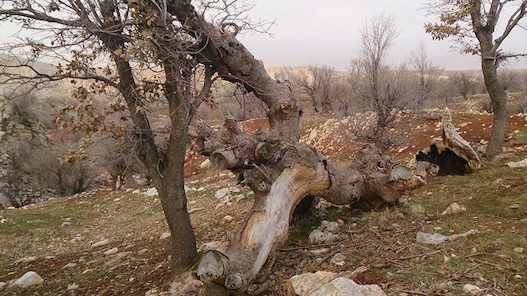August 08, 2014

The problem has been reported from 11 provinces and the National Forest, Rangeland and Watershed Organization (NFRWO) reports it is especially bad in six—Lorestan, Chahar Mahal Bakhtiari, Kohgiluyeh, Fars, Kermanshah and Kurd-istan—where 33 percent of the forest has been contaminated.
An officer of the NFRWO says he cannot attribute the dying of the Zagros forests solely to one cause.
He said that in addition to the fungus, changes in climate including temperature, precipitation and winds are also affecting the rapid decline of these forests. Most significantly, environmental stress has led to the spread of the pathogenic fungus.
The decline in the Zagros forests is not limited to its oak trees; juniper, mastic and sham have also been dying off anywhere from 10 to 100 percent.
The NFRWO is taking a three-fold approach by planting resistant species, extensive replanting and removal of infected trees. However, these actions do not match the thousands of hectares of oak trees that are falling victim to the infection.
Experts have not yet reached a complete consensus regarding the decline of the oak trees. They are looking at the experiences of some European countries in dealing with similar declines in oak tree population.
The head of the Iranian Forests Society says cutting down 18 million oak trees cannot be the best solution. Kia Deliri was quoted by the Mehr news agency as saying the actual extent of infection has not been accurately determined and some trees marked in winter for cutting down were seen to be growing leaves in the spring.
He also maintained that one of the chief problems of the region is the presence of a high concentration of livestock.
The oak tree is the most important and populous tree species in western Iran especially in the Zagros region. They line close to 1,300 kilometers of the Zagros Mountain Range from Western Azerbaijan Province to Fars Province. The oak trees cover an estimated 5 million hectares of land in western Iran.
